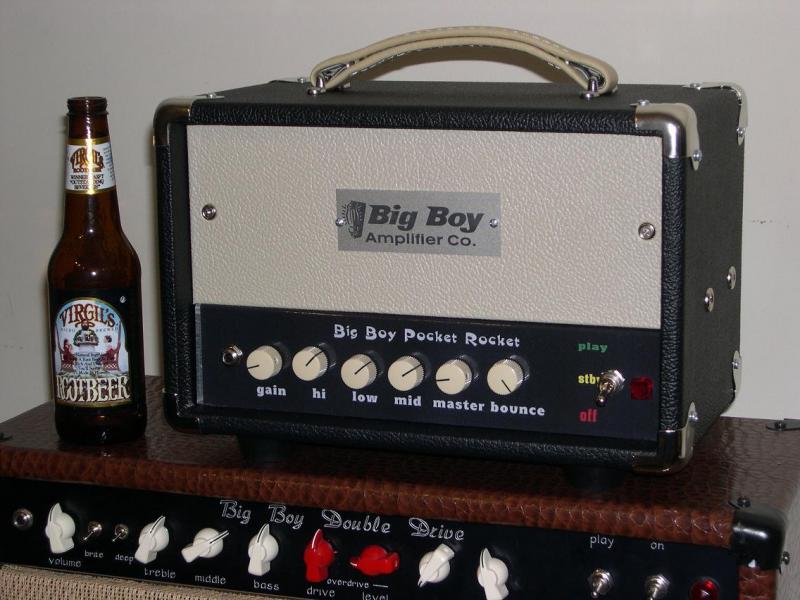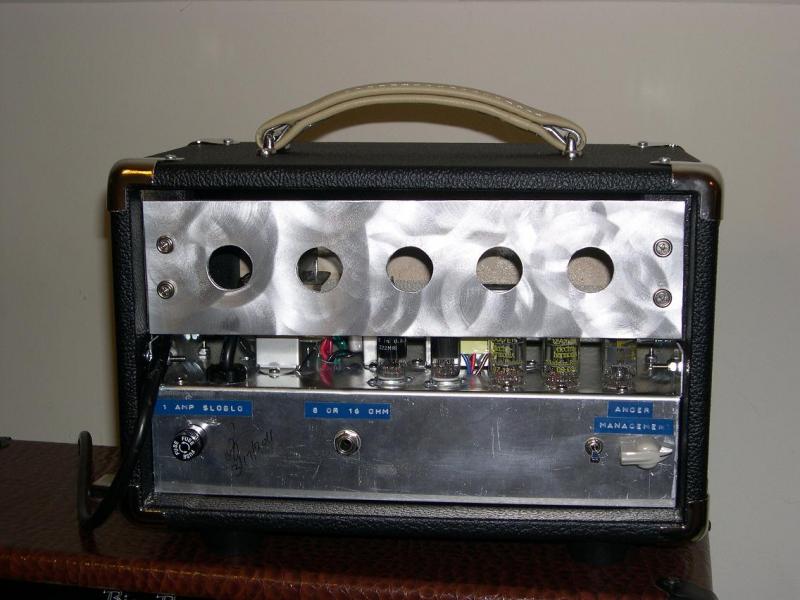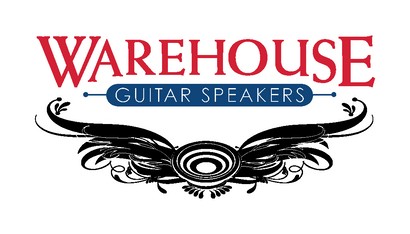Your Cart is Empty
NOW FREE SHIPPING TO 48 CONTIGUOUS UNITED STATES ON ALL ORDERS!!!
Big Boy Amps
by vaughn skow June 28, 2011 7 min read

Soooo, my wife is a native Southern Tennessee Gal, and she has informed me that the proper southern way to say hello to all of you is as follows: Hey y’all, whatchew doin? (Your proper response is: Not much, whatchew doin?). So, Hey y’all, whatchew doin? Me, I’m a blogging away. As most of y'all know, many amp builders prefer WGS speakers, from established companies like Burriss, and Paul Reed Smith, down to Mom-n-Pop boutique builders who’s’ production output is only a handful of amps a year ... and, here at WGS, we love ‘em every one! This week, I’m going to introduce y’all to a builder in the later category; Richard Gordon and his Big Boy Amplifiers. Richard was kind enough to send me one of his newest designs to play around with, and so this blog will include a video review of the little 3-watt "Big Boy Pocket Rocket". It’s a cool, and insanely innovative little critter, so READ ON!
Tiny tube amps are very en vogue these days, but most opt for a one or two knob approach ala the Epiphone Valve Jror Vox lil Night Train, both of which I featured in my blog a few months back. The Pocket Rocket goes in the opposite direction with a full tone stack, varriable negative feedback, pre and post gain and other gain tweaks available. This is not a plug & play amp, it requires some tweaking. Richard sent me all the info on he and his company, along with some pretty detailed stuff on the Pocket Rocket (yep, he’s one of us). Here is Richard’s story, in his own words (It’s an epic tale, prepare yourselves). My video Review follows Richard’s story.
Vaughn,
I'll tell you a little about me and my amps. Some of my other amps are on my myspace page: myspace.com/bigboyamplifiers
Way back in the 1980s the Army gave me some basic electronics training, but I never really used it. Many years later, I guess around 2002 or so, I had an old Gibson amp that broke, and I sent it out for repair. Being curious, I pulled the chassis when I got it back to see what was changed. The disconnect between what I paid and the amount of lead melted got me thinking...
Anyway, I started educating myself about tubes and tube amps. I got Gerald Weber's three books and read them all cover to cover about 3 times each. I happened upon a Ward's Airline amp (their Champ model) that sort of worked, and then I took the plunge and recapped and fixed it. Amazingly, it worked.
So I bought an old Harmon Kardon mono receiver (like you'd
use for a mic and a record player in your shoe store in 1964) of ebay for about
$40, cut out the transformers and built a a 1x12 combo amp. (Once upon a time I
built custom stairs in a wood shop.) Not only did the amp not kill me or burn
my house down, but it sounded great!
I took the amp to a local club one night and a bunch of
local guys played through it, and I ended up with a harp guy and a guitar
player ordering amps. And so my business was launched. For the last six years
I've been making one-off customs for players from here (Virginia)
to Montana.
Until 2009 I'd been delivering 6 or 7 amps a year, but
things really fell off with the recession. This meant I had more time to
experiment. I had been wanting to do something in the low-watt arena, and so
started messing about. I've made push-pull amps from 15 to 100 watts and
single-ended ones from 5 to 30 watts, and really tend to prefer the feel of a
push-pull.
However, it's really tough to get a decent push-pull, low power amp using tubes currently in production. Experimenting with power scaling showed me that if you drop the B+ down too far with 6V6s or EL84s, you just kill the dynamics and sparkle. Plus they just get kinds mushy.
This got me looking at alternative power tubes, and I
landed on the 6AQ5, which many people mistakenly think is the "little
brother" to the 6BQ5/EL84. The seven pin 6AQ5 was originally designed for
use in car radios, so it is a low power tube with a big soundstage. In some
circles they have a bad reputation, since they were used in the (absolutely
crappy) first generation of the Fender Musicmaster Bass amps. Truth is they are
great tubes, and nice NOS ones are dirt cheap.
I also wanted to experiment with alternative preamp tubes. I ended up really digging the 5879 pentode (same as in the classic Gibson GA-40 Les Paul amps). The pentodes have several advantages over 12AX7s that I liked. First, at conventional B+ voltages, they can make over three times the gain of a 12AX7. That means that running them at a reduced B+ (to extend life and reduce microphonics) still allows the first gain stage to put out what a normal 12AX7 gain stage does. Second, at low B+ they don't suffer grid emission--they don't kick out DC voltage on the input, so they don't give you "scratchy pot syndrome."
Third, the pentodes have a much higher input sensitivity
than 12AX7s, which yields tons of dynamic response to picking or guitar volume.
Lastly, they have a fatter, smoother high end than a 12AX7--particularly at
reduced B+.
Most of my favorite amp designs use the cathode
follower-driven tone stack. As I'm sure you know, this circuit has good touch
and contributes some odd-order harmonics to add crunchiness and chewiness to
the amp's texture.
The thing is, as far as my research has shown, no one has
ever put a pentode preamp gain stage in line with a cathode follower tone
stack. Why? Because conventional amp designers run conventional B+ values. So
if you put 200 VDC on the plate of a 5879 it'll have a gain factor of over 200,
which would be complete muddy mayhem into a cathode follwer. Icky, icky, icky.
By using amp secret of the ancient ninja number 17, I run
my 5879 at 90VDC, dropping it's output to ordinary gain stage ranges and
lowering the output impedance. So then that signal goes through the gain
control and onto the two stages that form the cathode follower. Instead of
mayhem, I get marvelous through a regular hi/lo/mid tonestack. (You must swear
secrecy to my amp ninja ways!!) There's a particular Hammond PT that is perfect for this
application's low B+.
The signal next goes into a normal long tailed pair phase
inverter with a dual ganged pot master volume. The 6AQ5s feed a nice, American
made OT normally used in 15 watt amps. This gives the low end room to
breathe--big iron is yummy.
The other thing I do is have a Bounce control on the front
panel. This dials in the amount of negative feedback into the phase inverter,
allowing you to tighten or loosen the power section.
On the back of the amp is a section I call Anger Management. A pot controls the gain profile of the 5879 and a switch bumps the gain of the second gain stage. These controls can be used to dial in various textures in the amp's overdrive.

By using off the shelf PT/OT/choke, I am able to keep the
cost down and reliability up. I hand build the chassis and the cabinet. I take the foam and dividers out of the generic six-mic
soft case and have an instant amp carrier.
The Pocket Rocket is small, light and easy to carry. It sounds and feels like a big amp, it just doesn't get as loud. With all the knobs maxxed and hammered with a humbucker it peaks at 5 watts into an 8 Ohm load, and just under 2 watts into a 16 Ohm load. Mind you, that's still plenty of noise into a modern speaker rated at 99 dB!
Wow, what a description! After all that, I was quite eager to listen to the little amp. First we took a good look at the amp, which had a very nice build quality, and quality feel to it. Here is a little overview video:
Next, I and the gang at Anything Audio/Music Tech put her through some paces, through a closed-back Fender 1-12 cab loaded with a Green Beret. The GB seemed like a perfect fit for the little 3-watter. Here is where things got interesting. We had just finished a full afternoon of filming the 2-12 speaker comparison videos featured in last weeks blog, using my 2-EL34 equipped Marshall Artist 3203; while not what I would term a super-loud rig, the Marshall was pushing some respectable amounts of air. When I started playing through the Pocket Rocket, we all felt as though it just couldn’t move enough air to sound respectable. Truth is, there just ain’t much clean headroom to be had with a 3-watt amp! Another truth about this amp is that if you like a one-knob turn it up and play approach, well, this one ain’t for you. It took a lot of cranking on the tone controls, along with the gain, master volume, and ‘anger management’ all cranked, but we ended up with a crunch tone that we all agreed was pretty darn cool, but not very loud at all. This is not an amp that could keep up with a drummer. Okay, so what’s the interesting part? Well, that happened when I played back the video for the first time, through studio monitors (JBL LSR 4328P’s), it sounded good, quite good in fact. Mr. Gordon told me that he envisioned the Pocket Rocket as a recording amp, and he just might be on to something there. I don’t think I’d ever try to gig with it, but record through it, yea boy. Richard told me he thought it would be a great amp to power an iso-cabinet, and I’ll just bet he’s right; too bad I didn’t have one to demo it with! Tell ya what, I’ll just shut up and let y’all decide for yourselves. Here is the video:
Man, I’ll say this about Richard Gordon, he sure is ‘one of us’, he clearly thinks outside the confining box of generally accepted designs. My time with the Pocket Rocket has made me want to hear one of his real ‘big-boy’ amps.
See y’all next week, it’ll be awesome. emailvaughn About Vaughn Skow
Leave a comment
Comments will be approved before showing up.
